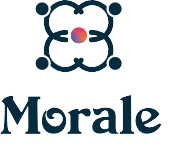PTSD or post-traumatic stress disorder is a condition that will be familiar to the majority of you already. Referred to as “shell shock” after World War I and “combat fatigue” after World War II, PTSD was long thought to be a side effect of direct combat. But it’s a myth that only veterans can suffer from PTSD.
Any person who has experienced something traumatic in their life has the potential to develop PTSD. This could be anything from a serious accident, natural disaster, a personal or terrorist attack, and bullying to name just a few. The difficulty with PTSD is that it’s very hard to categorise as anything negative experience could be perceived as traumatic. It makes it an entirely unique and personal condition, making diagnosis and treatment a little more difficult than other stress or anxiety disorders.
What is PTSD?
PTSD is defined as a ‘psychiatric disorder experienced in people who have experienced or witnessed a traumatic event, series of events, or circumstances’. There is no categorisation for the trauma a person experiences, it could be physical, emotional, and/or life-threatening. Those with PTSD struggling intense and ongoing negative thoughts and feelings related to their experience, lasting well after the traumatic event has passed. Flashbacks causing stress responses are often triggered by subtle cues in their environment, as well as nightmares and intense negative emotions towards the world and themselves.
PTSD is a difficult and lonely condition to live with, isolating the individual from society. Each case of PTSD is entirely unique and personal, making it very hard for those on the outside to understand and help. None other than the person affected can truly understand how the trauma altered them and how it feels living with PTSD, it can lead them to become totally detached from those around them.
Symptoms of PTSD
PTSD is a mental illness and typically elicits similar symptoms to other anxiety disorders. Following a traumatic event, PTSD can develop immediately or after a delay of weeks, or even months. Typically, PTSD symptoms will arise within 6 months of the event taking place.
- Difficulty controlling your emotions
- Issues maintaining a relationship
- Angry or emotional outbursts
- Difficulty feeling connected with other people
- Feelings of shame, worthlessness, guilt, and failure
- Nightmares and flashbacks
- Anxiety and stress responses
- Sweating, nausea, light headedness, muscle tension or shaking.
- Avoidance
- Difficulty sleeping and concentrating
- Self-harming or destructive behaviour (i.e. drug or alcohol misuse for example)
Is PTSD an anxiety disorder?
Due to the nature of PTSD triggers and symptoms, it has long been categorised as an anxiety disorder. Anxiety has become a prevalent condition amongst teenagers and adults across the globe, with almost an estimate of 45 million people struggling with the condition. Quite often, symptoms of anxiety disorders can overlap and mar the lines between them, making it quite difficult to diagnose and assess the conditions and their root causes.
PTSD and generalised anxiety disorder (GAD) do have some similarities, particularly in a number of their common symptoms, like the fight or flight anxiety response for example. However, they do have a number of subtle differences which has lead experts in the field to classify PTSD and GAD as two separate conditions, rather than collating them under the GAD umbrella.
Similarities between PTSD and GAD
In the Diagnostic and Statistical Manual, PTSD is referenced as a trauma and stress-related disorder, and was previously considered one of the major types of anxiety disorder. Considering the number of similarities shared between PTSD and GAD, it’s understandable why the two have been grouped together in the past. Here are a few symptoms of both PTSD and GAD, if you’re on the lookout for someone struggling with either condition, these are some good signs to keep an eye on.
- Extreme worrying
- Insomnia or restlessness
- Irritability and mood swings
- Sweating
- Increased heart rate
- Muscle tension
Differences between PTSD and GAD
However, PTSD and GAD have one major difference- their root cause. As we have discussed above, PTSD is triggered by a traumatic event or events experienced in a person’s life, whilst anxiety disorders typically develop over time and are largely due to chemical imbalances in the brain or as a second-hand effect of something else.
PTSD symptoms have been grouped into the following four categories:
- Intrusion: reoccurring memories or dreams, flashbacks, psychological distress when exposed to triggers or emotional cues.
- Avoidance: continuously avoiding the triggers or cues.
- Negative changes to mood and cognition: dissociative amnesia, negative perception of oneself or the world around them, self-loathing, detachment.
- Arousal: irritability, hypervigilance, self-destructive behaviour, difficulty sleeping.
Whilst a lot of these symptoms do present themselves in GAD, there is one common anomaly. GAD doesn’t include dissociative symptoms in its diagnostic criteria, whereas it is one of the major symptoms of PTSD.
Furthermore, while worrying is a common symptom of both conditions, people with GAD typically struggle with persistent or excessive worrying that isn’t associated with a specific event or trauma and instead occurs as a result of a multitude of circumstances that can trigger an anxiety response. For example, any social situation could trigger someone struggling with social anxiety to feel worried or fearful, and thus will illicit an anxiety response, whereas there will be one specific trigger that causes an anxiety response for someone with PTSD.
Seek help
PTSD affects approximately 1/10 people in the UK and can negatively impact the quality day to day life. The longer the condition is left untreated, the more intense it can become and prevent someone from functioning even in the most basic scenarios. Fortunately, there are a number of treatments and coping mechanisms available to help combat the symptoms of PTSD and get to the heart of the trauma. If you or a loved one is struggling with PTSD, it’s probably time to reach out and get some support.
PTSD is a lonely and isolating condition. With Morale, you can let someone dealing with it know that they’re not facing this storm alone. Download the app and start sending out boosts1 to those who need it most. Send them some words of encouragement and self-affirmation and help to combat the negative self-talk bringing them down and send them a boost of positivity to help them get through each day. Download the app from Google Play or Apple’s App Store.
Worried about missing out? Head over and check out our social media for regular updates and your daily dose of positive vibes.
If you’ve got some feedback for us we’d love to hear it! Send us an email to contact@moraleapp.co, we’re all ears…











